
This worksheet asks students to circle the number of syllables for each word.
- Subject:
- English Language Arts
- Material Type:
- Activity/Lab
- Provider:
- K12 Reader
- Date Added:
- 02/26/2019

This worksheet asks students to circle the number of syllables for each word.
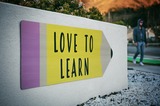
As a way to support teachers with English Language Arts (ELA) instruction during the pandemic, the NCDPI ELA team created choice boards featuring standards-aligned ELA activities.The intended purpose of these choice boards is to provide a way for students to continue standards-based learning while schools are closed. Each activity can be adapted and modified to be completed with or without the use of digital tools. Many activities can also be repeated with different texts. These standards-based activities are meant to be a low-stress approach to reinforcing and enriching the skills learned during the 2019-2020 school year. The choice boards are to be used flexibly by teachers, parents, and students in order to meet the unique needs of each learner.Exploration activities are provided for a more self-directed or guided approach to independent learning for students. These activities and sites should be used as a way to explore concepts, topics, skills, and social and emotional competencies that interest the learner.

Click Click on the speaker to listen to the word. Use the to move the dots to represent each sound in the word to the sound box. Spell the word by using the to move the letter tile to the sound in each box. Click the speaker again to listen to the word. Review your spelling. Click to submit

In this lesson, students engage in independent literacy centers to become proficient in completing activities about the stories they read. Although this lesson uses Seven Blind Mice as an example, the framework is adaptable to almost any text.
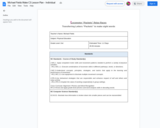
Students will complete relay races by performing various locomotor skills in different levels and pathways. Students will also be learning how data is transmitted through packets over the internet. They will learn what a packet is and what this looks like by performing a physical task in a relay race. To ensure inclusion and diversity students will be placed into “diverse” teams created by the teacher. For further collaboration in this lesson the Physical Education teacher can work with the 2nd grade team to help reinforce literacy content and/or vocabulary in this lesson.

This resource contains a lesson plan, word building board, picture cards and letter tiles, word letter pages, and three-in-a-row game to help students decode long vowels.
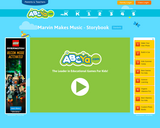
ABCya! presents its fifth children's storybook for the classroom. It's called Marvin Makes Music, an original work by Michelle Tocci. The story is about a frog that is sad because he cannot sing like his friends, until one day when he gets a new musical instrument. This is a great storybook to share with kids using an interactive whiteboard.
*This storybook has narration! Students can click the speaker button to have the story read to them.

Students will build words and record themselves spelling the word and saying it.
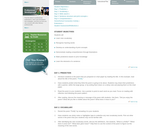
In this lesson, students will use a weekly poem to explore meaning, sentence structure, rhyming words, sight words, vocabulary, and print concepts. After studying the poem, students are given a copy of the poem to illustrate and share their understanding. All of the poems explored are then compiled into a poetry portfolio for students to take home and share with their families. To further connect home to school, a family poetry project is suggested.

Students will listen to the word spoken, move the dots to represent each sound in the word to the sound box, and spell the word, ad move the letter tile to the sound in each box. Students will move the heart over the tricky (heart) part of the word.
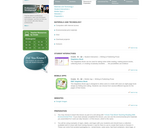
In this lesson, students read words found on everyday objects and use them to identify individual letters. They then create captions for an electronic book with preselected logos and illustrations. Finally, they create an original little book choosing their own logos, captions, and images.
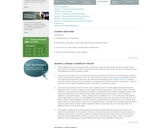
In this lesson, students will learn to identify letters and words by exploring one another's names and other words. Each student gets to be "Student of the Day," and the class will explore his or her name and life. Students will learn which letters are in their classmate's name, as well as the words for their friend's hobbies and favorite things. Students will be encouraged to draw and write messages to each other on a daily basis.

Let Spelly Spellican help you practice the Dolch Sight Words! First, make sure your sound is on, then choose one of the following word lists: Preprimer, Primer, First, Second, or Third. Correctly spell all of the words that you hear, and have fun exploring the ocean depths! About the Dolch Word List - The Dolch Word List is a list of English sight words by Edward William Dolch, PhD. The list is comprised of 220 words grouped by level, and includes pronouns, adjectives, adverbs, prepositions, conjunctions, verbs and nouns. *Headphones or speakers are required for this activity

In this lesson, students will read the folk tale Jack and the Beanstalk and discuss the word giant and its beginning sound. Students then create their own lists of words that begin with the same sound. Then, students are introduced to words with the soft g sound and create a new list of words with this beginning sound. As a culminating activity, students work individually or in groups to categorize animal names into groups according to their beginning g sound.
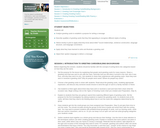
In this lesson, students will study greeting cards to build motivation to read and write, practice reading fluency, and attend to print concepts. This experience allows students to study the crafting techniques authors use when they create greeting cards. After exploring various greeting cards, students have the opportunity to create greeting cards and share them with other students.

In these activities, students will correctly read and write words ending in -s, -ed, and -ing and understand the meanings of those words.

This lesson is for grades 1-2 on literacy. At Home Learning Lessons are a partnership between the North Carolina Department of Public Instruction, PBS North Carolina, and the William and Ida Friday Institute for Educational Innovation. Each lesson contains a video instructional lesson, a PDF lesson plan with a transcript, and a PDF file of extension activities.
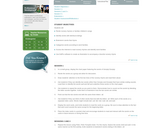
In this lesson, students learn to identify written words with similar endings by singing and reciting nursery rhymes. Students begin by reciting Humpty Dumpty, identifying two words with similar ending sounds, and creating their own lists of words with the same ending sound. Students repeat this procedure with words from Peter, Peter, Pumpkin Eater and Jack and Jill. Finally, students access a website to identify the word families featured in other nursery rhymes and then create an illustration and text based on their favorite nursery rhyme.

An interactive activity that supports critical thinking and problem solving while also building students' comprehension and spelling skills. Students will complete puzzles based on popular children's books.
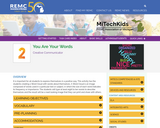
It is important for all students to express themselves in a positive way. This activity has the students creating a Word Cloud with words about themselves. A Word Cloud is an image composed of words used in a particular text or subject, in which the size of each word indicates its frequency or importance.